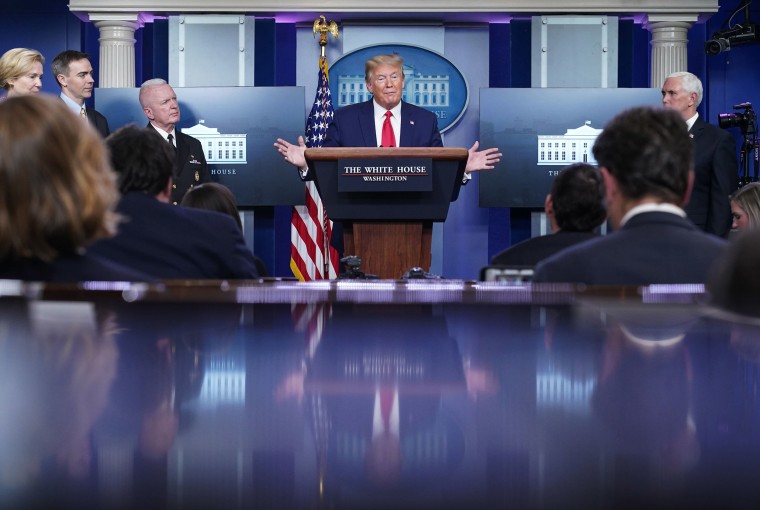There are competing sets of data on the precise number of coronavirus infections and fatalities in the United States, but NBC News' tally pointed this morning to a grim milestone for the nation: more than 50,000 Americans have now died as a result of the pandemic.
If that number sounds familiar, it may be because Donald Trump used it in an unusual way during Monday's White House press briefing:
"[W]e did the right thing, because if we didn't do it, you would have had a million people, a million and a half people, maybe 2 million people dead. Now, we're going toward 50, I'm hearing, or 60,000 people. One is too many. I always say it: One is too many. But we're going toward 50- or 60,000 people."
Even at the time, it was difficult to understand why the president was making such a projection. As of Monday, roughly 42,000 Americans had died from COVID-19. By suggesting the overall death toll could be as low as 50,000, Trump was effectively raising the possibility of a miraculous collapse in coronavirus fatalities.
So why in the world would the president tell the public that a death toll of 50,000 to 60,000 would be as bad as the crisis gets? Could he not see where the trajectory was headed?
A Washington Post analysis made a compelling case this week that Trump pointed to these numbers as a result of the White House misunderstanding COVID-19 modeling. I don't doubt that this confusion played an important part in the unfortunate presidential rhetoric.
But I also wonder whether Trump sees peddling bogus projections as his version of cheer-leading.
One of the most unfortunate of the Republican's quotes about the crisis came in February, when he assured the public that "within a couple of days," the number of coronavirus cases in the United States would drop "to zero," as a result of the "good job" he said Team Trump was doing. That was, of course, tragically wrong.
Asked a couple of weeks ago to defend his spectacular error, Trump told reporters, "[Y]ou have to understand, I'm a cheerleader for this country.... I think a president has to be a cheerleader for their country."
It's a peek into an unfortunate perspective: the president says wrong things, intended to boost public optimism, which he sees as an inherently good thing. Except, even if the claims are somehow well intended, the fact that they're wrong means the assertions have the opposite effect.
I wouldn't be surprised if Trump defended the projection of 50,000 fatalities the same way: he was simply being "a cheerleader for the country." But the public doesn't need a cheerleader; it needs a leader who provides reliable information.

